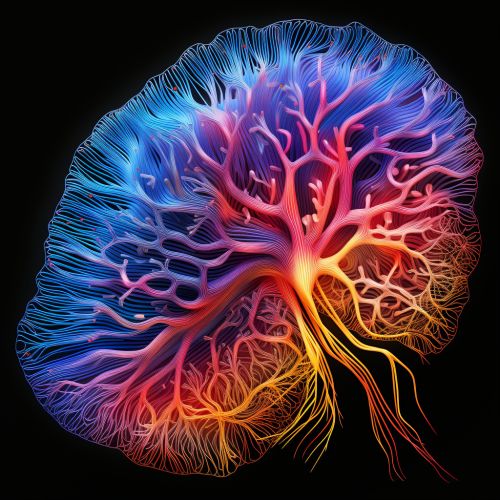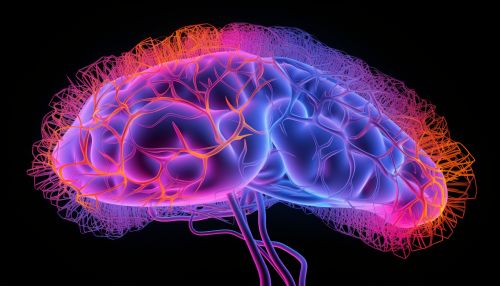Cognitive Mechanisms of Persuasion and Influence
Introduction
Cognitive mechanisms of persuasion and influence refer to the mental processes that underlie our ability to be persuaded or influenced by others. These mechanisms are rooted in our cognitive abilities, such as attention, perception, memory, and reasoning, which are shaped by our experiences, beliefs, and attitudes. Understanding these mechanisms can provide insights into how individuals and groups can be influenced, and how persuasion can be used effectively in various contexts, such as advertising, politics, and interpersonal communication.


Cognitive Processes in Persuasion and Influence
Persuasion and influence involve a variety of cognitive processes, including attention, perception, memory, and reasoning. These processes play a crucial role in determining how we interpret and respond to persuasive messages.
Attention
Attention is a fundamental cognitive process in persuasion and influence. It refers to the ability to selectively focus on certain aspects of our environment while ignoring others. In the context of persuasion, attention determines which messages we notice and consider. Factors such as the salience and relevance of the message, as well as our current goals and interests, can influence our attention.
Perception
Perception involves the interpretation of sensory information to understand our environment. In persuasion, perception determines how we interpret the meaning of persuasive messages. This interpretation can be influenced by our prior knowledge, beliefs, and attitudes, as well as the context in which the message is presented.
Memory
Memory plays a crucial role in persuasion by storing and retrieving information about persuasive messages. Our memory of a message can influence our attitudes and behaviors long after the message has been presented. Factors such as the repetition of the message, its emotional impact, and its relevance to our personal experiences can affect how well we remember it.
Reasoning
Reasoning is the cognitive process of forming conclusions, judgments, or inferences from facts or premises. In persuasion, reasoning allows us to evaluate the arguments presented in a message and to draw conclusions about their validity and relevance. Our ability to reason logically and critically is essential for resisting unfounded or manipulative persuasive attempts.
Theories of Persuasion and Influence
Several theories have been proposed to explain the cognitive mechanisms of persuasion and influence. These theories provide frameworks for understanding how different cognitive processes interact to shape our responses to persuasive messages.
Elaboration Likelihood Model
The Elaboration Likelihood Model (ELM) is a prominent theory of persuasion that proposes two routes to persuasion: the central route and the peripheral route. The central route involves careful and thoughtful consideration of the arguments presented in a message, while the peripheral route involves superficial cues such as the attractiveness or credibility of the source. The route taken depends on the individual's motivation and ability to process the message.
Cognitive Dissonance Theory
Cognitive Dissonance Theory posits that individuals strive for consistency between their beliefs, attitudes, and behaviors. When there is inconsistency, or dissonance, individuals are motivated to reduce it by changing their beliefs, attitudes, or behaviors. This theory has been used to explain why persuasive messages that create cognitive dissonance can be effective in changing attitudes and behaviors.
Social Judgment Theory
Social Judgment Theory suggests that individuals categorize persuasive messages into one of three latitudes: acceptance, rejection, or noncommitment. The placement of a message within these latitudes depends on the individual's current attitudes and the perceived similarity between the message and these attitudes. This theory highlights the role of subjective perception in persuasion.
Applications of Persuasion and Influence
Understanding the cognitive mechanisms of persuasion and influence has wide-ranging applications in various fields, including advertising, politics, and interpersonal communication.
Advertising
In advertising, persuasion techniques are used to influence consumers' attitudes and behaviors towards products or services. Understanding the cognitive mechanisms of persuasion can help advertisers design more effective advertisements by targeting the cognitive processes that underlie consumers' decision-making.
Politics
In politics, persuasion is used to influence voters' attitudes and behaviors. Politicians and political campaigns use a variety of persuasion techniques, such as framing and priming, to shape voters' perceptions of issues and candidates. Understanding the cognitive mechanisms of persuasion can provide insights into the effectiveness of these techniques and the factors that influence voters' responses to political messages.
Interpersonal Communication
In interpersonal communication, persuasion is used to influence others' attitudes and behaviors. This can occur in a variety of contexts, such as negotiations, conflict resolution, and relationship management. Understanding the cognitive mechanisms of persuasion can help individuals communicate more effectively and navigate social interactions more successfully.
Conclusion
The cognitive mechanisms of persuasion and influence are complex and multifaceted, involving a range of cognitive processes and theoretical frameworks. Understanding these mechanisms can provide valuable insights into how individuals and groups can be influenced, and how persuasion can be used effectively in various contexts. As research in this area continues to evolve, it promises to deepen our understanding of the cognitive underpinnings of persuasion and influence, and to inform the development of more effective persuasion strategies.
